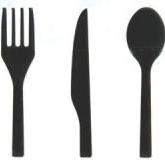On 10/25/2022 at 10:08 PM, KennethT said:I've often wondered how the various fish/eels originally made their way to these rice paddies? Were they originally stocked there by people or some natural means?
Given that some of the paddies are hundreds of years old, it is difficult to be certain what happened originally. The famous Dragon's Backbone paddies near Guilin were built between the 13th and early 17th centuries, for example.
I'd suggest that the antiquity also rules out any serious aquaculture. The paddies were, in all probability, irrigated by diverting streams, rivers, ponds etc all of which would have been rich sources of life. The rice raising peasants of course weren't complaining. The fish (some of them at least) help control insects as well as providing protein. Frogs found their way to the paddies,too again helping with insects
Today, a certain amount of aquaculture goes on, but given that most paddies are worked by near-subsistence farmers, most are still naturally stocked.

